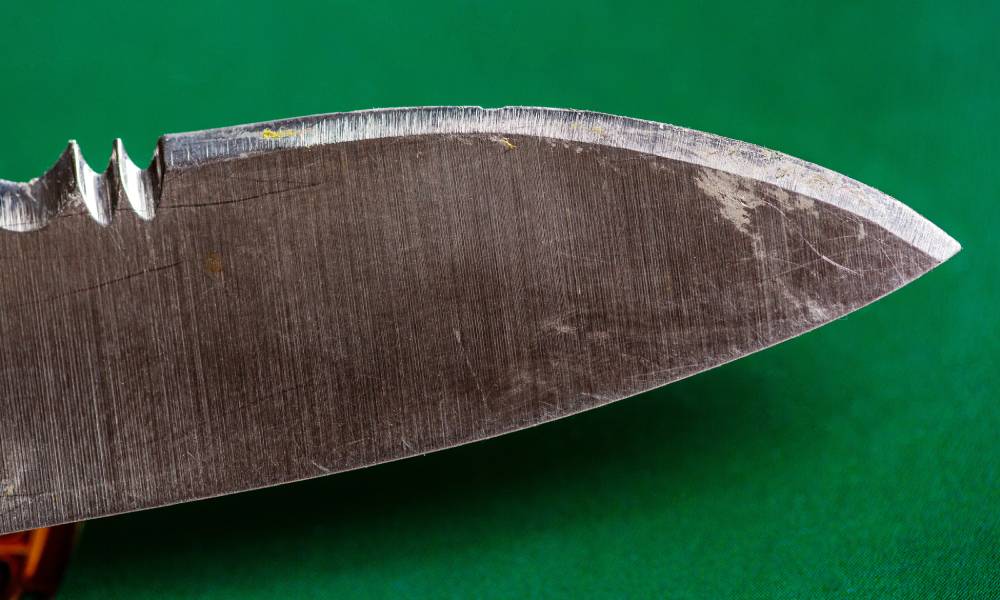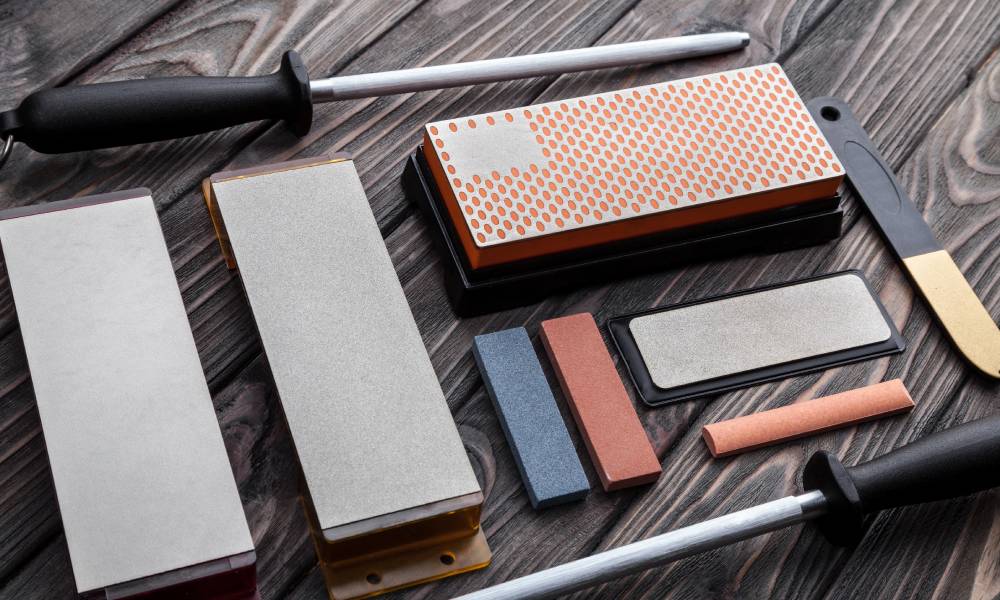What To Consider Before Sharpening Your Knives
Jun 2 2024 - 4:04
Knife collecting can be such a rewarding hobby, offering both aesthetic pleasure and practical utility to anyone’s life. However, for those who use their knives often, maintaining the condition of each one is crucial to preserving its value and functionality. While there’s a lot that goes into general maintenance, one of the most important aspects of keeping your knife in good condition is sharpening. Before you begin the sharpening process, though, it’s vital to consider several factors to ensure the longevity and performance of your knives.
Signs Your Knives Need Sharpening
Recognizing when your knives need sharpening is the first step in maintaining their edge and efficacy. A sharp knife should slice through materials with minimal resistance. If you notice that your knife is no longer cutting smoothly, it may be time for sharpening.
However, knives that have lost their edge won’t always feel harder to use. That’s why it’s important to examine the knife visually. If you observe any nicks or chips along the blade, these imperfections can hinder its performance and will require attention. Failing to do so can lead to permanent damage to your blade, something you’ll want to avoid with the finer pieces of your collection.
The Dangers of Dull Knives

Before we get into the finer details, it’s worth acknowledging that using a dull knife is not only frustrating but also dangerous. When a knife loses its sharpness, it requires more force to cut through materials, increasing the likelihood of slips and accidents. This added pressure can lead to a loss of control, making it easier to injure yourself.
Moreover, a dull knife can damage the materials you’re cutting, leading to uneven or jagged cuts. This issue is particularly concerning for collectors, as it can affect the integrity and aesthetics of the knife. Maintaining a sharp edge on your knives is essential for safe and effective use. Regular sharpening reduces the risk of accidents and ensures your knives perform at their best.
DIY vs. Professional Sharpening
Once you decide that it’s time to sharpen one of your knives, you have two primary options: doing it yourself or seeking professional services. Each approach has its advantages and disadvantages, but neither is the wrong answer.
DIY sharpening allows you to maintain control over the process, ensuring that your knives reach your exact specifications. It can also be cost-effective in the long run, especially if you invest in quality sharpening tools. However, sharpening knives requires skill and practice. Without proper technique, you risk damaging the blade or getting a subpar edge.
Professional sharpening services offer expertise and precision. Experienced sharpeners can restore even the worst-looking knives to their optimal condition, often using advanced equipment that may not be available to the average hobbyist. The downside is that professional services can be expensive and may require you to part with your knives for a lengthy period of time.
For most collectors, DIY sharpening will be the way to go, but it’ll depend on your skill, the value of your knives, and your willingness to invest in the necessary tools. Don’t be afraid to enlist the services of a professional if the job is beyond your capabilities. In extreme cases, though, you might need to retire the knife. If that’s the case, be sure to take the time to find a quality replacement. Our collection of Bradford knives is a great place to start looking.
Factors To Consider Before Sharpening Your Knives
For those who decide to sharpen their own knives, several things you should consider before you start can influence the outcome. First, identify the type of steel used in your knives. Different steels have varying hardness levels and may require specific sharpening techniques. Researching the composition of steel will help you choose the appropriate method and tools.
Next, consider the blade’s geometry and edge angle. The edge angle determines the knife’s sharpness and durability. Collectors often prefer specific angles based on the knife’s intended use and design. Understanding and replicating the original edge angle during sharpening is crucial for maintaining the knife’s performance.
Another factor is the condition of the blade. If your knife has significant damage, such as deep nicks or chips, it may require more intensive restoration. In such cases, professional services might be the best option to avoid further damage. However, with the right tools and know-how, you’ll be able to address some of these issues on your own.
Lastly, think about the frequency of use. Knives that see regular use will need more frequent sharpening. Establishing a maintenance schedule based on usage patterns will help you keep your knives in top condition. Make sure you don’t completely forget about your blades that don’t see as much usage, though. Time can be a cruel mistress, so be sure to touch them up every so often.
Tips for Choosing the Right Sharpening Method

Selecting the appropriate sharpening method is essential for achieving a fine edge. Various techniques and tools are available, each with its strengths and weaknesses, so be sure to get familiar with each one to know which is right for your needs.
Whetstones, or sharpening stones, are popular among collectors for their versatility and control. They come in different grits, allowing you to start with a coarse grit for initial sharpening and progress to finer grits for honing the edge. Using whetstones requires practice to master the technique, but they offer excellent results when used correctly.
Sharpening rods, also known as honing rods, are useful for maintaining an already sharp edge. They are easy to use and can quickly realign the blade’s edge between more intensive sharpening sessions. However, they are not suitable for restoring a severely dull or damaged knife.
If you want something a bit more modern, electric sharpeners provide convenience and speed, making them an attractive option for those with less experience. These devices typically have preset angles and multiple stages for sharpening and honing. While they can produce a sharp edge, they may remove more material than necessary and are less precise than manual methods, so pay close attention when using one.
Best Practices for Knife Maintenance
As a knife collector, the most important thing to realize is that sharpening is just one aspect of knife maintenance. It’s essential to follow best practices for care and storage if you want to keep your collection in pristine condition.
Firstly, clean your knives after each use if possible. Residue and moisture can lead to corrosion and dulling of the blade. Use mild soap and water, and dry the knife thoroughly with a soft cloth. Be sure to avoid using harsh chemicals or abrasive materials that could damage the blade’s finish.
Proper storage is also crucial. Store your knives in a dry environment, away from humidity and temperature fluctuations. Use blade guards, knife rolls, or dedicated storage solutions to protect the edges and prevent accidental damage.
Most importantly, take the time to regularly inspect your knives for signs of wear and tear. Promptly addressing even the smallest issues can help you prevent more significant problems down the line, even if they aren’t related to the edge of your knife. If you notice any damage, take the time to learn how you can fix it on your own or if professional restoration might be the correct course of action.
Find Out More:
What To Consider Before Sharpening Your Knives
The Art of Knife Sharpening
Zac Brown’s Southern Grind
TOPS Knives Review
